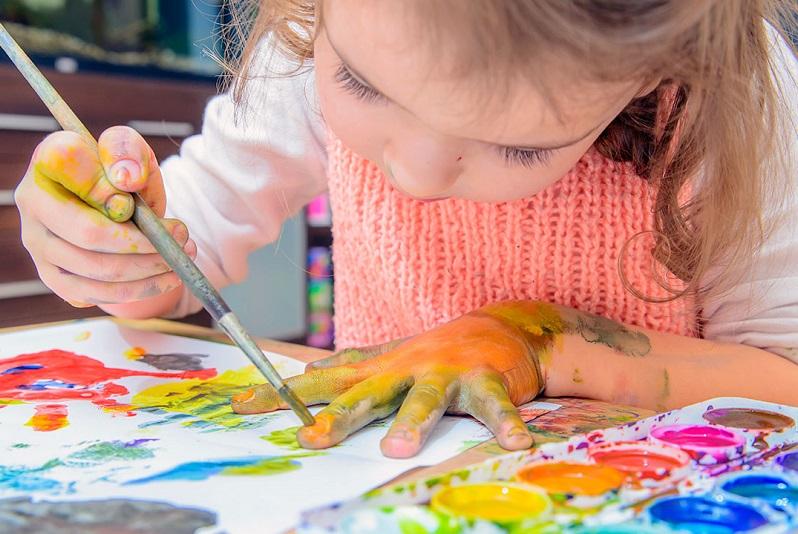Creative learning and development: ideas and activities
For your preschooler, time, materials and space to be creative are very important.
Preschoolers like to be spontaneous in their creative play, so it’s good to follow your child’s lead. But there’ll also be times when your child wants you to be more involved in her creative activities. By being actively involved, you can develop your child’s skills and understanding.
It’s good to show your child that there’s more than one way to do something. For example, there’s more than one way to draw a person, build a sandcastle or play a drum. This lets children know they can develop their own ideas.
You don’t need to give your child new or expensive play materials. Homemade, recycled and natural materials are all low-cost ways to stimulate play and imagination.
And whatever artworks your child comes up with, give your child lots of descriptive praise. For example, ‘I love the picture you drew. You really know how to put colours together’. This boosts confidence and encourages your child to keep playing creatively.
Creative activities: arts and crafts
Everyday and recycled objects can encourage your child’s creative development. For example:
- Give your child an empty cardboard box to make a house, a robot, a truck, an animal – whatever your child is interested in. Your child could paint the box or decorate it with craft materials.
- Use empty kitchen rolls or small plastic juice bottles to make people. Draw on faces, stick on paper clothes, and use wool or cotton wool for hair. Your child could use these new toys to make up stories.
- Go on a nature walk to look for natural materials to make art. For example, in autumn collect fallen leaves for drawing, pasting onto paper or dipping into paint.
- Use small plastic lids, patty pan cases and other ‘threadables’ to make jewellery.
- Keep a ‘busy box’ with things like string, wrapping paper scraps, patty pans, iceblock sticks, stickers and straws that your child can use to make whatever she wants.
- Find apps or games that your preschooler can use to make digital art. For example, there are apps for free drawing or arranging photos into collages.
Tip: Create a home art gallery for your child’s artwork. A kitchen wall or pinboard is ideal for sticking up pictures and paintings. You could ask your child to choose one special painting each week to frame in the centre of the gallery. This shows that you value their creations.
Creative activities: drama
Preschoolers love dramatic play. Here are some ideas to get you and your child started:
- Instead of throwing out old clothes, start a dress-up box or bag. You can also find cheap and unusual clothes and props at op-shops.
- Use puppets to put on shows. It’s easy to make simple puppets. You can use a cardboard box to create a puppet theatre too.
- Use drama, song and movement to act out things from daily life. It could be doctors, mothers, fathers, shopkeepers, firefighters – whatever your child likes.
- At story time, encourage your child to act out roles from a story with movements or sounds. For example, your child could pretend to be one of the monsters from Where the wild things are.
- Video your preschooler as he plays. Help him use a movie-making app to make it into a special video to share with family and friends.
Creative activities: music, movement and dance
Music, movement and dance can often be part of simple, everyday play with your child:
- Give your child a saucepan, a saucepan lid and a wooden spoon – your child can use this as a drum kit.
- Watch short videos of animals making noise and moving in the wild. Your child might enjoy copying animal movements and sounds.
- Play instruments in ways that match animals and their movement. For example, shake a shaker slowly like a plodding elephant or loudly like an excited monkey.
- Encourage your child to march, roll, stamp, hop, slide and twirl. Put on some favourite music to get your child moving or coming up with new actions.
- Help your child develop a sense of rhythm with songs, chants and rhymes like ‘Incy wincy spider’, ‘Heads and shoulders’, ‘Five cheeky monkeys’ and ‘Jack and Jill’.
- Point out sounds with steady beats, like a ticking clock or a dripping tap. Encourage your child to clap, tap, march or bang to the beat.
This article was published with permission from raisingchildren.net.au

